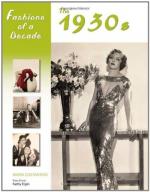|
This section contains 119 words (approx. 1 page at 300 words per page) |

|
The 1930s were a decade of vigorous organization among American workers. Skilled workers such as carpenters, steampipe fitters, and stonemasons had been organized in the American Federation of Labor (AFL) since the late nineteenth century. As a result of unionization, these skilled workers had better pay, benefits, and working conditions than other workers. Semiskilled and unskilled laborers — those who could be taught their job in a matter of a few minutes or a few days — were often fired by their employers when they attempted to unionize. Yet in the 1930s, buoyed by the government support of unionization in the NIRA and in the Wagner Act, unions grew rapidly.
|
This section contains 119 words (approx. 1 page at 300 words per page) |

|




